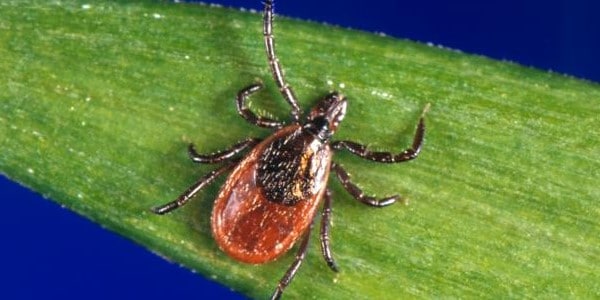At a glance
Anaplasmosis, also known as human granulocytic anaplasmosis, is a tickborne disease caused by the bite of a tick carrying the bacterium Anaplasma phagocytophilum. Two tick species, the blacklegged tick (Ixodes scapularis) and western blacklegged tick (Ixodes pacificus), are known to carry the bacterium. There have also been rare, reported cases associated with blood transfusion.

Transmission
Tick Bites
- Anaplasmosis is most commonly acquired following the bite of an infected tick.
- Although cases of anaplasmosis can occur during any month of the year, the majority of cases reported to the CDC have an illness onset during the summer months, and a peak in cases typically occurs in June and July.
- Blacklegged tick (Ixodes scapularis): widely distributed across the eastern United States.
- The blacklegged tick also transmits other pathogens (including Borrelia burgdorferi, the causative pathogen of Lyme disease, and Babesia microti, the causative pathogen of babesiosis); coinfections have been reported.
- The blacklegged tick also transmits other pathogens (including Borrelia burgdorferi, the causative pathogen of Lyme disease, and Babesia microti, the causative pathogen of babesiosis); coinfections have been reported.
- Western blacklegged tick (Ixodes pacificus): distributed along the West Coast of the United States.
- The western blacklegged tick also transmits other pathogens (including Borrelia burgdorgeri (Lyme disease), and B. miyamotoi (hard tick relapsing fever).
- Although cases of anaplasmosis can occur during any month of the year, the majority of cases reported to the CDC have an illness onset during the summer months, and a peak in cases typically occurs in June and July.
Blood transfusion
This is less common than through the bite of an infected tick.
- Blood products are not routinely screened for the presence of A. phagocytophilum.
- A. phagocytophilum can be transmitted through blood transfusions, even if the blood donor does not have any symptoms, and can survive up to a month in refrigerated blood.
- Patients who develop anaplasmosis within a month (30 days) of receiving a blood transfusion or solid organ transplant should be reported to state health officials for prompt investigation.
- Leukoreduction might reduce the risk of Anaplasma transmission; but it does not eliminate the risk. Cases associated with the use of leukoreduced blood products have been documented.
- For more information about anaplasmosis and blood transfusions see Special Considerations in Diagnosis and Management of Tickborne Rickettsial Diseases: Rocky Mountain Spotted Fever and Other Spotted Fever Group Rickettsioses, Ehrlichioses, and Anaplasmosis — United States: A Practical Guide for Health Care and Public Health Professionals (2016).
Epidemiology
- Geographic range: Anaplasmosis is most commonly reported in the Northeastern and upper Midwestern states, although the geographic range of anaplasmosis cases appears to be expanding throughout the Midwest and East Coast.
- Peak transmission: Most cases occur during June–November. Two peaks of increased case reporting usually occur, with the first peak during June–July and a smaller peak during October-November.
Other tickborne pathogens spread by these tick vectors
In addition to Anaplasma phagocytophilum, the blacklegged tick also transmits several other pathogens. These include:
- Borrelia burgdorferi (the causative agent of Lyme disease),
- Babesia microti (the primary cause of human babesiosis),
- Borrelia mayonii (a cause of borreliosis),
- Borrelia miyamotoi (a cause of hard tick relapsing fever)
- Powassan virus (cause of Powassan virus disease), and
- Ehrlichia muris eauclairensis
Risk of coinfection
- Anaplasma coinfection has been reported in <10% of patients.
- Rash is uncommonly reported in patients with anaplasmosis. The presence of a rash might indicate that the patient has a coinfection with Lyme disease, or another tickborne disease.
Resources
For more in-depth information about signs and symptoms of anaplasmosis, see: Diagnosis and Management of Tickborne Rickettsial Diseases: Rocky Mountain Spotted Fever and Other Spotted Fever Group Rickettsioses, Ehrlichioses, and Anaplasmosis — United States: A Practical Guide for Health Care and Public Health Professionals (2016)
Geographic distribution


